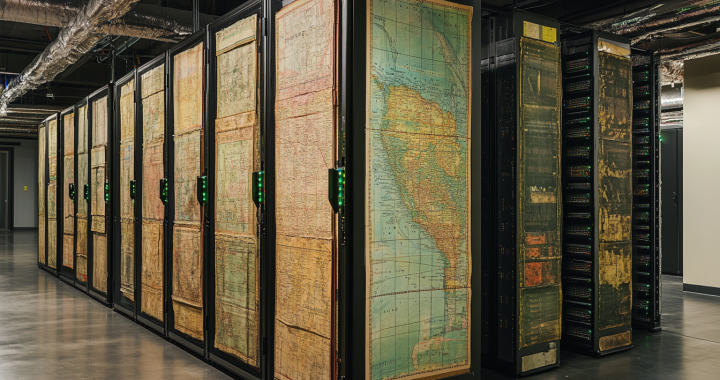Test Environment Management 101
Test environments are critical in the software development and software testing process as they allow for quality assurance testing to take place in a controlled setting. Test environments can take many forms, from simulating customer data on a test server to running performance tests on a staging environment. The key is to ensure that your test environment accurately reflects your production environment as closely as possible.
There are many ways to run tests, and most involve testing environments. This post explores test environments from the ground up. Not only will you learn what a test environment is, but who is responsible and what practices are needed.
This post will explore test environments in-depth, discussing everything from what they are to how to set them up and manage them effectively.
What is a Test Environment?
A test environment is any space in which software undergoes a series of experimental uses. In other words, it’s a place where software testing will you test your code to make sure it works as you intended.
A Test Environment is a type of IT environment that is used for the sole purpose of testing. This could include anything from functional testing to load testing and performance testing.
The main purpose of having a Test Environment is to create an isolated environment, including Test Data, in which development and tests can be carried out without affecting the live production environment.
Test environments are typically made of one or more of your applications, or systems. This includes the physical or virtual hardware, whether on-premise or in the cloud, and the operating system on which such versions of the application software will reside for the duration of prescribed test executions.
Let’s take a look at a few test environment types and gain a deeper understanding of them.
Types of environments
There are typically seven types of environments along any software’s development lifecycle:
- Development
- System Testing
- Integration Testing
- User Acceptance Testing
- Performance Testing
- Staging
- Production
Each environment has a different purpose, and as such, each one runs the application in a slightly different way.
What is a “Development” Environment?
The development environment, on the far left of the lifecycle, is where the main (latest) branch of a software application is located. This is where developers spend time writing code to create a minimum viable product (MVP) from an initial concept. These environments may be shared within the team, or deployed on people on development instances, say inside a VM or Container on their laptop.
The development environment plays a crucial role in the software development process as it is here that new features or updates are first worked on. Note: It is not unusual to have these testing environments installed on one’s laptop.
What is a “System” Test Environment?
Supporting System or Component Testing, a system test environment is a non-production environment, or test bed, that is used to test the specific, standalone, functionality of a system before it is deployed to later test phases. This type of environment is typically configured to resemble the production environment as closely as possible, however, it will probably use stubs (mocks or virtual services) to mimic the behavior of up or downstream systems.
What is a “System Integration” Test Environment
The objective of System Integration Testing (SIT) is to ensure that all software applications and microservices work together as intended and that data integrity is preserved between them.
System Integration Test Environments are used to test the end-to-end integration, with a specific focus on the connection, or interface, points, and the movement of data between the systems. As such System Integration (SIT) testing environments are a combination of several systems that mimic how production systems collaborate.
What is a “UAT” Test Environment?
User Acceptance Testing (UAT) is a type of testing that is used to determine whether a software application meets the needs of the end-user. This type of testing is usually carried out by the end-user, or someone who represents the end-user, such as a business analyst.
UAT testing environments are an end-to-end representation of your Production Environment. It would normally contain one system instance for each production instance. For example, you would have a CRM UAT to represent CRM Production.
What is a “Performance Testing” Environment?
A performance testing environment is a non-production environment that is used to conduct performance tests, that is test the performance of software, typically under load. Performance tests are important to ensure that the software will be able to handle the expected number of users or transactions when it goes live.
Several different factors need to be considered when setting up a performance testing environment or test bed, including hardware requirements, software configurations, and network settings. It is important to have a clear understanding of what needs to be tested and how the results will be used before starting to create the performance testing environment.
What is a “Staging” Environment?
Following on from standard Test Environments, we have the Staging environments. A staging environment is meant to simulate production as much as possible, as such Staging Environments are usually well controlled, near-production level in size and layout complexity.
Simply put, this final non-production environment is used to provide further confidence in the software before it reaches the end destination of production. Note: A Staging Environment may also be used for supporting endeavors like Production Support.
What is a “Production” Environment?
Production Environments is the final stop for any software application. It is here that the application will be used by actual end-users or customers and here we find the production data. Given that it is supporting end users it is common to have the highest spec infrastructure deployed here, that is the highest performing resources like CPU, Memory, and Disk.
In addition, and due to the need for availability, it is common to have important systems configured in highly available and load-balanced layouts. And in conjunction, it is important to have well-defined processes and procedures in place for managing and maintaining them. These processes should cover everything from provisioning, and rollback through to incident management.
It is also important to have monitoring in place so that any issues can be identified and rectified as quickly as possible. This monitored data can also be used to help improve the application over time.
With the above in mind, who sets up these environments & how? Ultimately the Non-Production / Test Environments are managed by a Test Environment Manager.
What is a Test Environment Manager?
Test Environment Manager is a job title that refers to the person responsible for managing and maintaining Test Environments. The TEM is responsible for ensuring that the Test Environments are properly configured, maintained, and meet the needs of the IT project.
The Test Environment Manager is responsible for the day-to-day management of Test Environments, like Deployments, Incidents & Change, and may also be responsible for managing other aspects of the testing process, such as tooling and test data.
The TEM role is often filled by a technical individual, perhaps originally a system or technical test engineer, with a good understanding of the development & test life cycle.
Note: In a large organization there may be many Test Environment Managers, either dedicated to a single Testing Environment, System, and/or a Business Division.
What is Test Environment Management (TEM)?
Definition: IT & Test Environment Management is the act of understanding your cross-life-cycle IT environments and establishing proactive controls to ensure they are effectively used, shared, rapidly serviced and provisioned, and/or deleted promptly.
The key activities to consider when managing test environments are:
- Know what your IT and Test Environments look like through Environment Modelling.
- Capture Demand across Projects and Dev & Test Teams and avoid testing environment resource contention via Test Environment Bookings.
- Support Change & Incident through IT Service Management (ITSM) requests/support ticketing.
- Proactively Manage Testing Environment Events through collaboration with Calendars & Runbooks (Standard Operating Procedures).
- Streamlining your IT Operations, and software development lifecycle, through investment in application, data & infrastructure automation. For example consider: Provisioning, Rollback, Decommissioning, and Shake Down scripts.
- Deliver Insights on Structure, Usage, Availability, and Operational Capability. Ideally real-time through an enterprise-level Test Environment Management tool.
- And finally, Improving continuously through Environment Housekeeping and Optimization.
What Test Environment Management Tools are available?
Want to mature your Test Emvironment Management? Test environment management tools help to support the creation and maintenance of effective test environments by providing a way to manage different aspects of the test environment. Test environment management tools can range from reservation and scheduling to infrastructure configuration and deployment. Using these tools, organizations can improve the efficiency and quality of their testing process, as well as reduce the associated costs.
There are a variety of TEM tools available, each with its strengths and weaknesses. To choose the right tool for your organization, it is important to first understand your specific needs and requirements. Once you have a clear understanding of your needs, you can then evaluate the different options and select the tool that best meets your needs.
Some of the most popular test environment management tools include:
Each tool has its unique features and pricing structure, so it is important to compare and contrast the different options before making a decision.
To Conclude
Test environment management is a critical part of the software development and testing process, and the right test environments and TEM people can make a big difference in the quality and efficiency of your IT delivery process. In addition, adopting the correct Test Environment Management Tool will help your software teams produce and maintain high-quality test environments, accelerate TEM operations and implement important Test Environment Management best practices.



